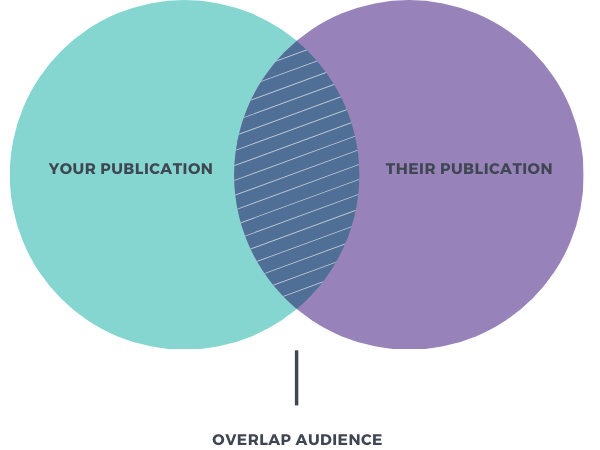
Growing Audience Through Cross-Promotion and Partnerships
How media companies can work together to grow
April 25, 2020
This post originally appeared on A Media Operator.
—
When I was a young teenager, I saw Field of Dreams for the first time. The main character played by Kevin Costner is walking through his corn field when he hears a mysterious voice say, “if you build it, he will come,” regarding building a baseball diamond to get his deceased father to come back.
Spoiler alert: if you build it, nobody is coming. At least not quickly…
In my piece about your newsroom being your biggest asset (versus a liability), I wrote:
Hire great reporters, give them the resources they need to succeed, and then have them report the hell out of that industry.
That is absolutely step one to building a great media business and it’s a strong indicator of a media company succeeding. If you’re doing really great, deep, investigative work, it’ll hopefully get picked up and audience will come to your publication.
While the editorial team is doing this, there are ways that audience development teams can work with partners to collaboratively grow readership in a sustainable and, hopefully, lucrative way.
These tactics can work for both consumer and b2b media brands, but I’m going to focus on the b2b side.
Related, but not identical competitors
Before we can do anything, we need to find publishers that have audiences that might share an interest in our publication.
For example, let’s say you run a trucking/shipping publication and the other publication is about supply chain. It’s possible that some of your overall audience is also interested in supply chain and vice versa.
The value of this exercise is you can find a list of publications that are, to some extent, competitors, but are also different enough that both your audiences might appreciate both publications. Although the overlap audience is not a majority, looking across multiple publications and their overlaps is a good way to grow.
But once you actually figure out the list of publications, what do you do next to get that overlap audience to become your audience? Here are a few ideas ranked from lowest to highest lift.
Shared newsletter & podcast ads
Everyone has a podcast and newsletter these days. Not everyone has a ton of audience for either of those products.
One option would be to run promotional copy for the other publication’s products in your own. Or, if you’re running a newsletter, you can put a text advertisement somewhere in the body that basically calls it out in a similar way. Both of you then link to each other’s newsletter landing pages and call it a day.
When you’re doing this, you’ll want to make sure you’ve got the correct conversion tracking on your landing page so you know how many new subscribers you got from your partner. If you’re getting very few, then obviously their audience isn’t incredibly engaged. There’s no point continuing to work with this partner.
It’s super simple and yet, you’d be surprised how few do this. I have a theory on why no one does this and I’ll get to that at the end of the piece.
What I would be more cautious about is dedicated email sends about each other’s newsletters. It’s theoretically possible that it could work, but you also run the risk of seriously pissing off your audience and we’re looking to grow the audience, not shrink it.
Co-branded webinars/research
Let’s say that you want to find a way to get more direct growth than you would from a passive shout-out in a newsletter or podcast. One way is to actually create a piece of content with the partner.
Here is where I think webinars and research reports are a great opportunity. If you and the partner are on relatively equal footing from a size perspective, you both can do equal amounts of work. But if you’re the smaller publication, offer to produce the entire thing. Especially if you’re a smaller piece of a large industry—trucking and shipping within supply chain management—then if your industry suddenly gets very hot, you can serve as a utility to the larger publication that might not be ready to produce content about that sub-niche.
You’re going to want to have a single landing page that you both push traffic to. Have a call to action on the page that lets the user know that, by signing up for the webinar/research report, they’re going to receive newsletters from both publications. Both parties are responsible for promoting it to their respective audiences. You’re looking to gain brand recognition with a new audience and growth in your database.
This one is going to be much harder to get done for a variety of reasons, but the biggest is that for a lot of b2b brands, webinars/research sponsorship is a product that they charge money for. When you’re doing outreach to prospective partners, expect to get pushed to the sales team versus the audience development team. But if you can network with the right person who is thinking about audience growth versus getting a commission, there might be an opportunity here.
Make money with them
Or you can go to the extreme and do what Bloomberg and The Information announced earlier this week. According to a Digiday article:
The two publishers have come together to offer a $499 one-year subscription to both Bloomberg.com and TheInformation.com, which will allow readers to access all paywalled content, as well as provide access to The Information’s new app, monthly video calls, events and a subscriber-only Slack channel, and Bloomberg’s subscriber newsletters, Bloomberg TV live streams and podcast.
…
Lessin said revenues from the bundle will be split 50-50 between The Information and Bloomberg. Under the partnership, even if one publisher brings in more subscribers than the others, the two companies will split revenue down the middle at the end of an agreed upon period.
Both Bloomberg and The Information are seriously leaning into this opportunity. I am already a subscriber to both publications, but I was on Bloomberg today and I already saw this advertisement pop up. I’m also seeing Bloomberg doing paid advertising on Instagram to get people interested in this opportunity.
This sort of a deal is the hardest to get done, but one that is very interesting because both parties should find themselves with engaged subscribers that are—hopefully—going to renew for a second year at full price.
Because I am already a subscriber to both, I can’t test how the user flow works, so if anyone has done it, please let me know. That said, I’m pretty sure both companies use the same registration system—Piano—so I imagine it is a bit more straightforward to build out these custom offerings.
Nevertheless, this is the ultimate opportunity. Bloomberg likely recognized that it was probably not doing a good enough job reporting on technology and The Information predominately focuses on technology. Here, they identified the overlap audience and are now intelligently driving users to subscribe to each other.
At your publication, are there opportunities to make similar business deals with other publications that have that overlap audience? It doesn’t have to be a subscription. It could be the sale of a one-off report. Either you offer them a report and share in the revenue of their sales or vice versa.
Sometimes coopetition is okay
In business, I think it’s natural to want to “win” against other publications that are related to you. I know I certainly want A Media Operator to be the best media newsletter out there.
The fact that someone else also writes a great media newsletter doesn’t diminish the quality of mine. Perhaps I tackle issues with a different lens than they do. Or, maybe I only focus on digital media while others focus on all sorts of media.
There are overlap audiences across these newsletters and, frankly, an opportunity for everyone to grow.
The same can be said for large publications. We get so wrapped up in owning our audience that we don’t recognize there are opportunities to grow more if we look at other publications—especially those that serve a different and slightly overlapping audience—as coopetition rather than competition.
The simplest way to dip your toe into these sorts of partnerships is with the podcast/newsletter swaps. What’s the worst that can happen? You don’t get any new audience. But what’s the best case? The overlap audience is big and you get a big rush.
While I focused the majority of this newsletter on b2b, so long as you have an overlapping audience with another publication, there are opportunities to do this sort of cross-promotion in all niches.
Thanks for reading this week’s piece. For those of you that are responsible for audience development, have you ever done one of these partnerships? Has it worked for you? Leave a comment and let us know what else you’ve found works with related, but not overly competitive publications.
I hope you all have a great weekend and I’ll see you next week!
The Only Subscription
You Need to
Stay at the
Edge of AI
The essential toolkit for those shaping the future
"This might be the best value you
can get from an AI subscription."
- Jay S.
Join 100,000+ leaders, builders, and innovators

Email address
Already have an account? Sign in
What is included in a subscription?
Daily insights from AI pioneers + early access to powerful AI tools









Comments
Don't have an account? Sign up!